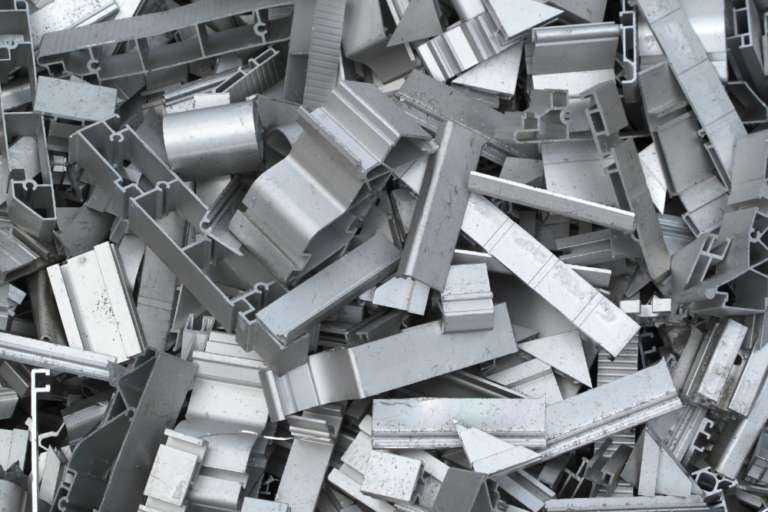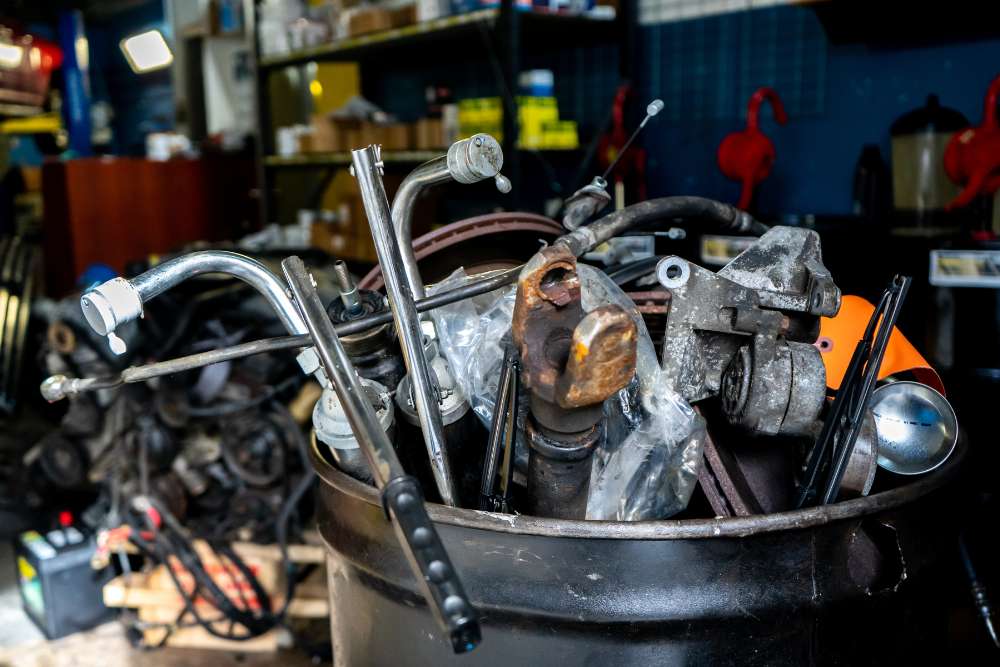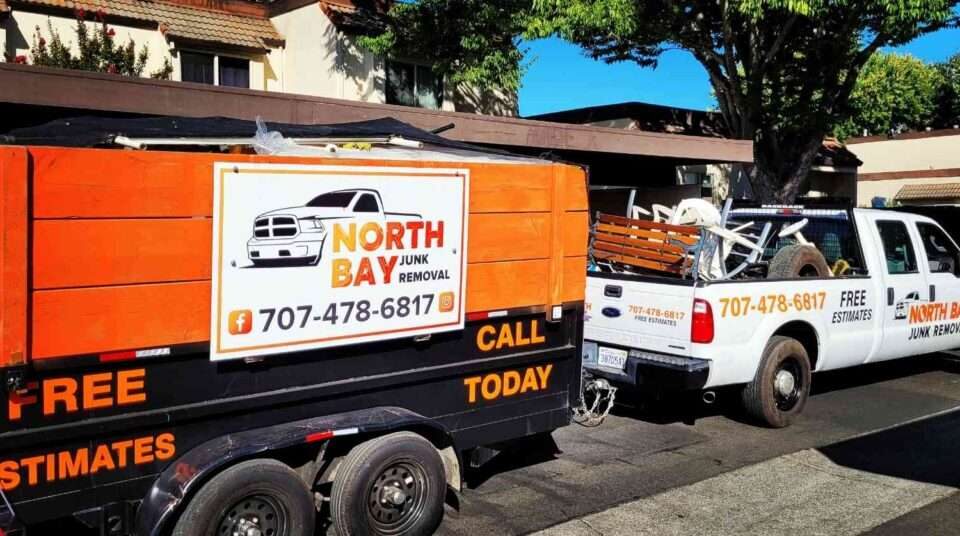
Why E-Waste Disposal Should Be a Top Priority for Homeowners and Businesses
September 23, 2025
The Essential Guide to E-Waste Disposal for Businesses
September 23, 2025How Scrap Metal Removal Can Boost Your Eco-Friendly Efforts
Every home and business accumulates scraps of metal over time, whether from renovation projects, broken appliances, or old equipment. While many people treat these materials as useless clutter, they actually hold significant potential for sustainability. Scrap metal removal is more than just a way to clear space—it is a powerful eco-friendly practice that supports recycling and reduces environmental harm. By ensuring metal is collected and reused, valuable resources are conserved, landfill waste is minimized, and greenhouse gas emissions are reduced. This guide explores how scrap metal removal can strengthen eco-friendly efforts while benefiting both communities and the planet.
Understanding the value of scrap metal in sustainability
Scrap metal often appears to be waste, yet it plays a critical role in sustainable living. Unlike plastics or certain composites, metals are infinitely recyclable without losing their quality. This means that an old refrigerator door or a pile of rusted pipes can be transformed into new products without extracting more raw materials from the earth. Recycling scrap reduces the need for mining, an industry that causes deforestation, habitat destruction, and water pollution. By removing and reusing these materials, individuals and businesses contribute directly to reducing these damaging practices.
From an eco-friendly standpoint, scrap metal has an unmatched capacity to conserve resources. For example, recycling aluminum saves up to 95 percent of the energy required to produce it from raw ore. Similarly, steel recycling significantly lowers carbon emissions. Recognizing scrap metal as a renewable resource rather than garbage shifts perspectives.
How scrap metal removal reduces landfill waste
Landfills across the country are already under immense pressure, and much of this waste comes from materials that could be recycled. Metals left in these sites take decades, sometimes centuries, to degrade while leaching harmful substances into soil and groundwater. Scrap metal removal provides a solution by diverting materials away from landfills and into recycling streams. This not only conserves space but also reduces pollution risks associated with waste mismanagement.
By actively removing scrap, communities and businesses prevent the buildup of dangerous toxins while supporting sustainable practices. Landfills are not designed to handle the heavy loads and chemical reactions that scrap metals can create. Instead, metals can be processed, melted down, and reformed into new products. Every piece of scrap diverted from a landfill means less environmental damage and a stronger step toward circular resource management.
The energy savings from recycling scrap metal
One of the most overlooked benefits of scrap metal removal is the incredible energy savings it enables. Producing metals from raw ores requires enormous amounts of energy, from mining and refining to transportation. Recycling, on the other hand, bypasses many of these energy-intensive steps. For example, recycling steel uses about 60 percent less energy than producing it from virgin materials, while recycling aluminum cuts energy use by up to 95 percent. These savings significantly lower greenhouse gas emissions, directly contributing to the fight against climate change.
When businesses and households remove scrap responsibly, they support these large-scale energy reductions. The act of collecting and recycling discarded metal reduces overall industrial demand, creating ripple effects across supply chains. Energy savings translate into fewer fossil fuels burned and less stress on natural ecosystems.

The role of scrap metal in building a circular economy
A circular economy aims to keep resources in use for as long as possible, minimizing waste and maximizing value. Scrap metal removal fits perfectly into this model. Instead of treating old appliances, tools, or machinery as disposable, they are seen as valuable raw materials for future production. This reduces the need for continuous extraction of new resources and keeps materials circulating through the economy.
Businesses that adopt scrap removal practices demonstrate their commitment to sustainability and efficiency. By partnering with certified recycling services, companies can ensure their scrap metals reenter manufacturing processes. On a larger scale, this strengthens industries by reducing costs associated with raw material sourcing. Scrap metal removal does more than clean up clutter—it redefines waste as a resource.
How businesses benefit from eco friendly scrap metal removal
For businesses, scrap metal removal offers both environmental and operational advantages. Office renovations, manufacturing byproducts, or outdated machinery often result in piles of unused metal. Leaving them in storage not only wastes valuable space but also creates safety hazards. Removing scrap clears work areas and promotes efficiency, while ensuring materials are recycled responsibly demonstrates corporate environmental responsibility.
Eco-friendly scrap removal can also improve a company’s public image. Clients and partners increasingly value sustainability, and businesses that recycle scrap metals show commitment to reducing waste. Additionally, some recycling centers provide compensation for large scrap quantities, offering financial returns. By integrating scrap metal removal into operational practices, businesses cut costs, improve safety, and boost reputation.
The impact of scrap metal removal on natural resource conservation
Mining for new metal resources comes at a steep environmental cost. Forests are cleared, rivers are polluted, and entire ecosystems are disrupted to extract ores. Scrap metal removal directly reduces demand for these destructive practices. By recycling metals, fewer raw materials are needed, allowing natural habitats to remain intact and biodiversity to thrive. This form of conservation supports long-term ecological balance while addressing the urgent need for resource preservation.
On a broader scale, conserving natural resources helps future generations. Metals are finite, and continued dependence on mining is unsustainable. Recycling through scrap removal extends the life cycle of existing materials, ensuring resources remain available for decades to come. Every piece of scrap metal recycled is one less piece of earth disrupted for mining. By participating in scrap metal removal, communities actively protect the planet’s fragile ecosystems, aligning human needs with environmental preservation.
How scrap metal removal lowers greenhouse gas emissions
Scrap metal removal plays an important role in cutting greenhouse gas emissions. When metals are produced from scratch, the extraction and refining processes release vast amounts of carbon dioxide and other harmful gases into the atmosphere. Recycling bypasses much of this, resulting in substantial emission reductions. For instance, recycling one ton of steel prevents nearly two tons of carbon dioxide from being released.
The benefits extend beyond industrial production. Transporting scrap to recycling centers requires less energy than shipping raw materials from distant mines. These combined reductions in emissions contribute to combating climate change at both local and global levels. Scrap metal removal connects everyday environmental actions to broader climate initiatives, making it a practical way to reduce carbon footprints. By prioritizing scrap collection and recycling, households and businesses become active participants in climate change mitigation, proving that small choices lead to big environmental outcomes.
The community wide benefits of scrap metal removal
Scrap metal removal supports entire communities, not just individual households or businesses. Cleaner environments result when scrap is collected and recycled rather than dumped illegally or left to rust in open spaces. Abandoned metals can leach toxins into soil and waterways, harming local health. Removing these materials improves community safety while reducing pollution.
Recycling industries built around scrap metal removal also generate employment opportunities. Workers are needed to collect, process, and repurpose materials, contributing to local economic growth. By creating jobs and reducing environmental hazards, scrap removal fosters stronger, healthier communities. Schools, organizations, and businesses that participate in scrap collection campaigns often inspire residents to adopt greener habits. These collective efforts showcase the power of community action in driving sustainability. Scrap metal removal, when embraced widely, transforms neighborhoods into cleaner, safer, and more environmentally responsible spaces.
Practical ways to manage scrap metal responsibly
Managing scrap metal begins with identifying and separating it from other waste. Setting up designated bins or collection points makes it easier to keep metal apart from general trash. Businesses can schedule regular audits to monitor how much scrap is generated and plan for recycling pickups. Partnering with professional junk removal services ensures that metal is collected, transported, and processed responsibly, reducing risks of mishandling.
On a smaller scale, individuals can bring scrap metal to recycling facilities or participate in community collection programs. Large household items such as old stoves or broken bicycles should be removed by specialists who understand safe handling procedures. Proper management also includes learning which metals are recyclable and which require special treatment. Taking these steps ensures that scrap is not only removed but also reintroduced into the manufacturing cycle. Responsible management turns everyday waste into a powerful tool for sustainability.
The future of scrap metal removal in sustainable living
As the world continues to prioritize sustainability, scrap metal removal will play an increasingly vital role. Rising demand for metals in industries like construction, technology, and transportation makes recycling even more important to balance consumption with preservation. Future innovations in recycling technology promise more efficient methods of processing metals, reducing waste and conserving energy further.
For households and businesses, staying ahead means embracing scrap removal as an ongoing practice rather than an occasional task. Policies and regulations will likely encourage stricter recycling mandates, making early adoption a smart strategy. Scrap removal represents a future where waste is minimized, resources are conserved, and eco-friendly living is the standard. By viewing scrap as a valuable resource, society can shift closer to achieving sustainability goals. The future of green living is tied closely to how effectively we handle the metals already in circulation.
Conclusion
Scrap metal removal is more than a practical solution for clutter—it is a key contributor to sustainable living. By recycling discarded metals, individuals and businesses reduce landfill waste, conserve energy, lower greenhouse gas emissions, and preserve natural resources. These actions also support a circular economy and demonstrate accountability toward the environment. For communities, scrap removal improves safety and creates economic opportunities, making it a practice that benefits everyone. Businesses, in particular, gain by aligning eco-friendly efforts with operational efficiency and public trust. When professional help is needed, North Bay Junk Removal provides reliable junk removal services in Santa Rosa, CA. Their team ensures scrap and other waste materials are handled with responsibility, offering a seamless way to combine cleanliness with sustainability. To make a difference today, call North Bay Junk Removal at 707-478-6817. With their support, your junk removal efforts become an active part of protecting the planet.




